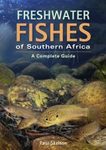About this book
The Indo-Pacific surgeonfish genus Ctenochaetus, unique in having VIII dorsal spines and numerous slender flexible teeth with expanded, incurved, denticulate tips, consists of the following 9 species: C. binotatus Randall (East Africa to Tuamotu Archipelago), distinct in having a lunate caudal fin and a prominent black spot at rear base of both the dorsal and anal fins, the juveniles with a yellow caudal fin; C. cyanocheilus, n. sp. (western Pacific east to Samoa, Marshall Islands, and Baker Island), previously identified as C. strigosus, dark orangish brown with bluish longitudinal lines on body, yellowish dots on head extending onto anterior body and chest, and bluish lips, the young bright yellow; C. flavicauda Fowler (Pitcairn Islands, French Polynesia, Line Islands, Baker Island, and Cook Islands), previously regarded as a color variant of C. strigosus, dark orangish brown with an abruptly white caudal fin, the young bright yellow; C. hawaiiensis Randall (central Pacific, including Hawaii), with nearly twice as many lower as upper teeth, slightly emarginate caudal fin, very dark brown with fine yellowish lines on head and body, the young orange with gray-blue chevrons that develop to a reticulum with growth; C. marginatus Valenciennes (central Pacific except Hawaii to eastern Pacific), usually 17 pectoral rays, brown with blue dots on head, body, and pectoral fins; C. striatus (Indo-Pacific except Hawaii and the Marquesas, the most common species at most localities), with 27-31 dorsal soft rays, usually 17 pectoral rays, a lunate caudal fin, dark brown with pale bluish longitudinal lines on body and a broad zone of orange-yellow dots around orbit, the juveniles with slightly oblique red stripes; C. strigosus (Hawaiian Islands and Johnston Island), brown with longitudinal blue lines on body, blue dots on head (not extending onto body) and a conspicuous yellow edge to orbit, broad posteriorly, the young yellow to yellowish brown; C. tominiensis (East Indies to Palau, northern Great Barrier Reef, and Fiji), outer soft portion of dorsal and anal fins bright orange, caudal fin white, a prominent black spot at rear base of dorsal and anal fins; and C. truncatus, n. sp. (Indian Ocean), formerly identified as C. strigosus, brown with a truncate caudal fin, pale blue to yellow dots on head and body, the juveniles bright yellow.
Customer Reviews






































